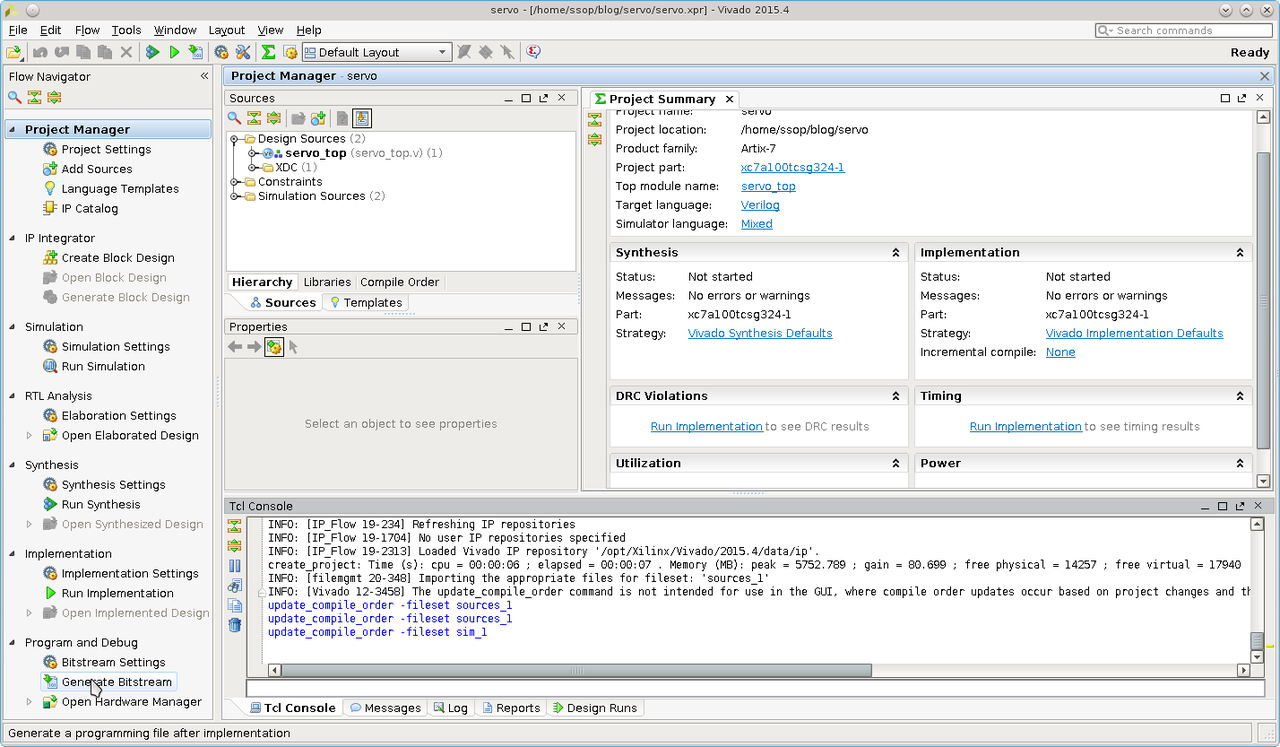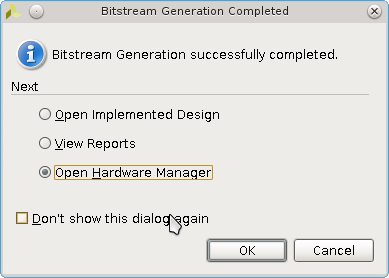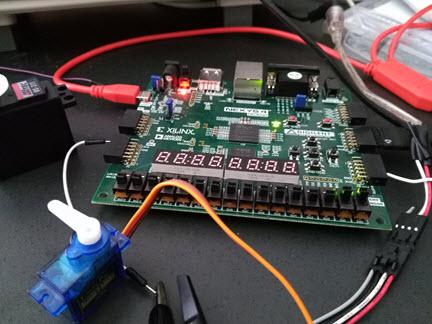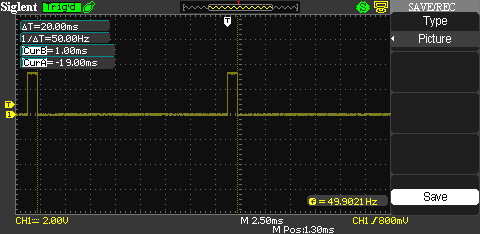servo driver
Servo
Servo motor is an electromechanical drive that is relatively simple to operate. A typically servo motor has relatively few movements, namely left, right and center. Controlling its movement is to send the periodic pulse width of about 1.5ms, 1ms or 2ms for the center, left, and the right movement respectively. In this demo, I use a very simple verilog code to control its movement.
Tool use
Xilinx Vivado 2015.4
Siglent 100MHZ DSO (optional)
Hardware component
Digilent Nexys4DDR
Servo motor (SG90, or HS-311).
External 5V power supply needed for the servo.
Wires and cables for connections.
Interface
sw[1:0] are for position control
led[1:0] are connected to sw[1:0]
ja[0] for motor drive
H/W Synthesis
cd to my local directory where the verilog source files reside (Code available in my respoitory https://github.com/souktha/servo)
start vivado,
select Tools -> Run Tcl Script...
Click setup-servo.tcl to run the setup.
'create' at tcl shell command window. Vivado will create the project for this demo.

On Vivado, generate bitstream

instead of step-by-step go straight to generate bitstream
Once completed (do not expect error), with the board connected, open the hardware manager and download the bitstream to the Nexys4DDR. Board will be up and running with the synthesized FPGA code.

bitstream generation complete
The set-up

Output waveform
For this servo motor, it is powered externally by a 5V power supply; however, the driving pulse is directly from ja[0] pin of the FPGA. Using sw[1:0] I can control its movement.

Example of the periodic control signal
Conclusion
Servo motor of this type is very easy to operate and it can tolerate a small variation of the periodic frequency. Having the right duty cycles for the controlling signal is more important. In this experiment I use 50HZ periodic frequency to keep the coil energized as required by its specfication. The HITec HS-311 works the same way as this SG90 servo. Stepper motor will require more complicated controlling phases. This will be my next post.
Citations
- ref
-
SG90Servo.pdf - Servo motor spec